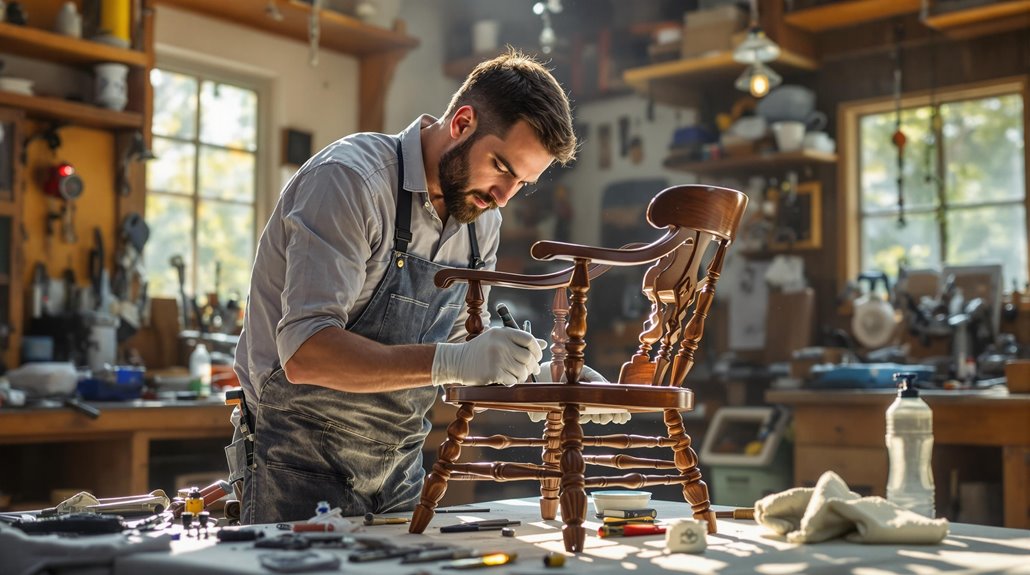At Care Pro, your safety and satisfaction are our top priorities. We implement rigorous quality control measures in material selection, ensuring durability and strength. Our standardized processes, coupled with strict safety protocols, guarantee precise restoration tailored to your needs. Each team member undergoes continuous training, staying updated on best practices and safety standards. We leverage technology for real-time data capture and streamlined project management, enhancing efficiency and accuracy. Regular client feedback helps us refine our approach, driving continuous improvement. Investigate how our commitment to quality and safety sets us apart, ensuring the best outcomes for your restoration project.
Key Takeaways
- Care Pro defines project requirements focusing on quality, safety, and vital properties like strength and durability in restoration processes.
- A structured approach ensures compliance with safety protocols, including PPE use and regular safety training for all team members.
- Digital documentation and technology integration enhance efficiency, allowing real-time data capture and streamlined communication during restoration projects.
- Continuous training and skill development ensure staff are knowledgeable about industry standards and best practices for effective restoration.
- Client feedback mechanisms drive improvements, ensuring services meet customer expectations and enhance overall satisfaction with the restoration process.
Quality Control in Material Selection
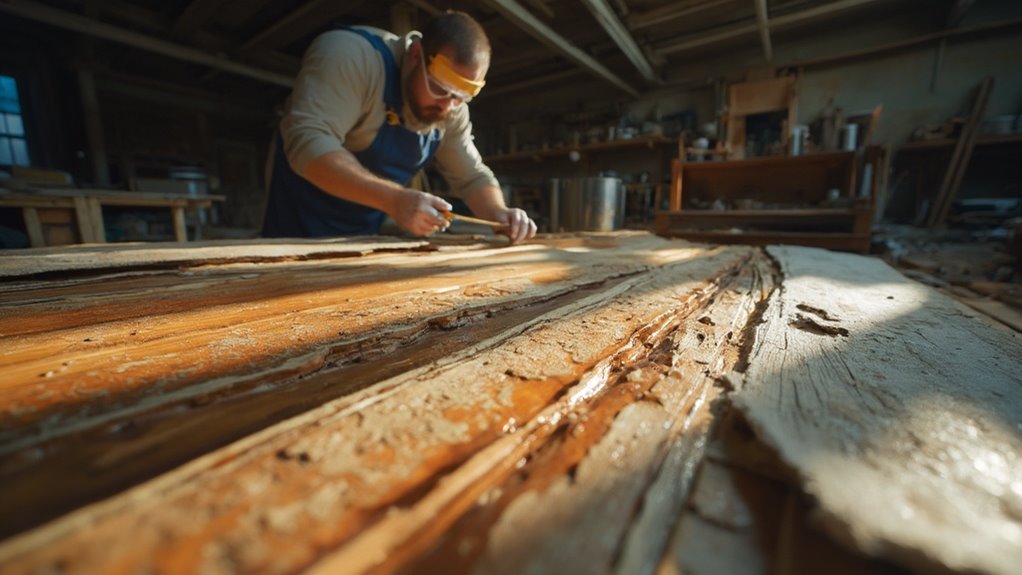
How can you assure the materials you choose meet all necessary project requirements? Start by defining your project's physical, mechanical, thermal, electrical, and chemical requirements. This foundational step helps you identify vital material properties like strength, durability, and corrosion resistance. Evaluate the environmental conditions the material will face, and prioritize factors such as thermal and electrical conductivity and density.
Next, establish rigorous selection criteria, weighing mechanical properties, cost, manufacturability, and environmental impact. Compare various materials against these criteria to guarantee you select the most suitable option. Consider not just the immediate performance but as well the lifecycle impact, including extraction, production, use, and disposal. Quality control ensures that selected materials meet high standards for performance and safety. Additionally, understanding the risks associated with water damage categories can inform material choices for improved durability and safety.
Testing is vital; conduct laboratory tests, simulations, or prototype testing to validate material properties and performance. This ongoing evaluation guarantees the selected material remains suitable over time, compliant with safety and quality standards. Document every step of the material selection process, enabling well-informed choices that balance cost, safety, and environmental impact. By focusing on material durability and minimizing environmental impact, you create a solid foundation for project success while promoting sustainability.
Standardized Processes and Protocols
In restoration projects, having standardized processes and protocols is essential for safety and efficiency. By implementing step-by-step procedures and utilizing digital documentation systems, you can improve consistency and minimize errors. This structured approach not only streamlines operations but likewise guarantees that every team member follows the same high standards. Additionally, understanding the different categories of water damage ensures that the restoration process is tailored to the specific needs of the situation.
Step-by-Step Procedures
A systematic approach to step-by-step procedures guarantees that every restoration is executed with precision and care. Begin with tooth preparation using a 330 Carbide bur, ensuring you clean the interproximal contact with a FlexiDiamond Strip. Create a uniform 2mm long bevel with a 6862-012 diamond bur, then apply EnamelEtch well past the bevel with a #1 Brush. Follow this by applying a bonding adhesive, like Cosmedent Complete.
Next, focus on the composite layering. Start by placing a substructure with a Microhybrid composite, such as Renamel Microhybrid A3. Sculpt this layer to the leading edge of the bevel using the Cosmedent 8AL instrument, and polymerize it. Add a Microfill layer to simulate the enamel surface, again utilizing the same sculpting instrument, and polymerize this final layer for 60 seconds.
In finishing and polishing, use an ET9 carbide bur to establish initial contours. Refine the restoration with the FlexiDisc System, blending the Microfill margin seamlessly into the tooth. Finally, achieve a polished finish with Fine/Superfine FlexiDiscs and Enamelize Polishing Paste. Each step is critical to achieving a high-quality restoration.
Digital Documentation Systems
Utilizing digital documentation systems transforms the way restoration professionals manage their workflows. With mobile devices like smartphones and tablets, you can capture and store information on-site, markedly improving digital efficiency. Mobile apps allow you to take photos, record notes, and complete forms directly on your device, which reduces the risk of errors and delays while boosting documentation accuracy.
| Feature | Benefit | Impact |
|---|---|---|
| Real-time Data Entry | Improves accuracy and timeliness | Knowledgeable decision-making |
| Centralized Storage | Guarantees easy access and searchability | Streamlined operations |
| Improved Reporting | Generates detailed reports quickly | Better project insights |
These systems further promote enhanced collaboration among team members, allowing simultaneous access and updates to project data. This guarantees everyone stays updated and aligned, preventing information loss. Moreover, digital solutions come with robust security measures, safeguarding your data and ensuring it is backed up. By implementing these digital documentation systems, you position yourself for greater efficiency, accuracy, and ultimately, success in your restoration projects.
Consistency and Error Minimization
Digital documentation systems lay the groundwork for consistency and error minimization by enabling restoration professionals to standardize their processes and protocols. By documenting step-by-step procedures from initial assessment to project completion, you can guarantee every project is executed with precision. This standardization streamlines workflows, reduces variability in work quality, and helps maintain high operational efficiency.
To further improve your work, implement clear guidelines at every restoration stage. Regular training on industry best practices and new technologies is crucial, equipping your team with the expertise needed for consistent, high-quality results. Continuous skill development guarantees you stay ahead in a rapidly evolving industry.
Incorporate quality control measures, such as regular inspections and audits, to monitor compliance with established protocols. Utilize checklists and standardized reporting systems for effective error tracking, allowing you to identify and address issues promptly. By focusing on process optimization and maintaining high standards across all projects, you can greatly minimize errors and meet client expectations consistently. This commitment to excellence not only improves your reputation but also drives successful restoration outcomes.
Safety Guidelines and Procedures
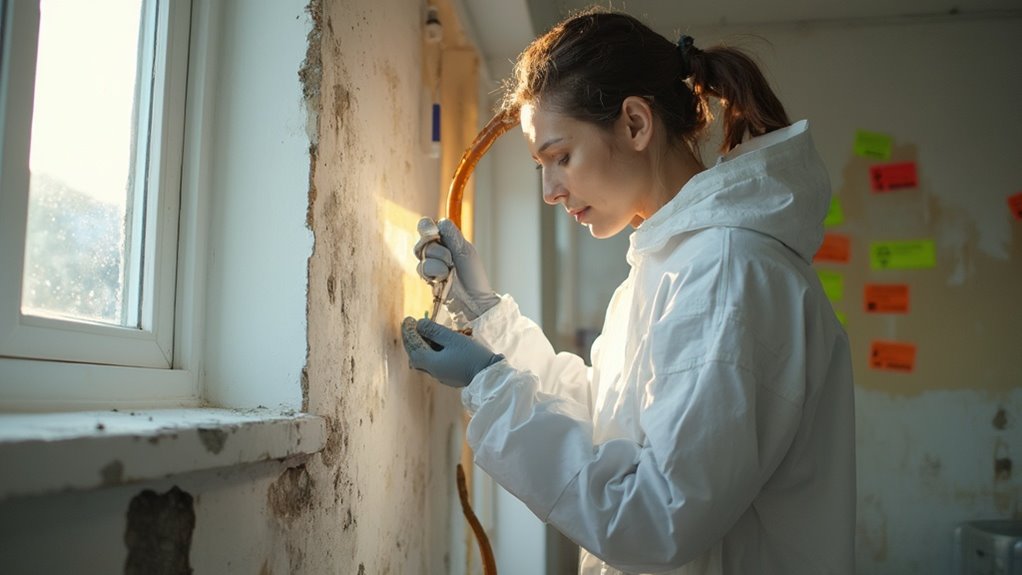
When you're working in a restoration environment, implementing work zone safety measures is essential to protect both you and your team. Be certain to use dust control equipment effectively to minimize airborne contaminants and maintain a clean workspace. By prioritizing these guidelines, you can guarantee a safer restoration process and better outcomes for everyone involved.
Work Zone Safety Measures
In the midst of a lively work zone, implementing effective safety measures is fundamental to protecting both workers and motorists. Traffic management is critical, and it begins with a well-organized layout. You need clearly marked advanced warning areas, shift zones for lane changes, and a buffer separating the work zone from traffic.
Here's a quick reference table for key safety measures:
| Area | Purpose | Key Components |
|---|---|---|
| Advanced Warning | Alert motorists of changes | Warning signs |
| Shift Zone | Guide vehicles through changes | Traffic control devices |
| Buffer Zone | Protect workers from traffic | Cones, barrels, barriers |
| Work Area | Clearly define operational space | Delineation tools like cones and signage |
Your team's safety relies on personal protective equipment (PPE) like hard hats and high-visibility clothing. Regular safety meetings and hazard identification by a competent person are fundamental for maintaining awareness. Compliance with standards guarantees that you not only meet regulations but also cultivate a culture of safety that protects everyone involved.
Dust Control Equipment Usage
Effective work zone safety measures set the stage for the implementation of dust control equipment, which plays a significant role in maintaining a safe environment. To achieve ideal results, you need to prioritize dust collector maintenance and guarantee your equipment is configured correctly. This includes installing explosion vents that redirect fire or explosion forces away from personnel, thereby enhancing deflagration prevention.
Additionally, it's essential to maintain the integrity of ductwork with flow-activated dampers and isolation valves. These devices help prevent smoke and flames from infiltrating work areas. Regular inspections and maintenance of these systems will minimize risks and uphold compliance with NFPA and OSHA standards.
When changing filters, adopt safe procedures like the bag-in/bag-out system to isolate workers from hazardous dust. Implement lockout/tagout protocols to avert accidents during maintenance. Remember, the goal is to prevent combustible dust accumulation in hoppers and utilize pulse-cleaning controls effectively.
Training and Skill Development
Training and skill development are crucial components in guaranteeing that restoration professionals are fully equipped to handle the complexities of their field. You'll want to engage in a variety of training programs, including on-the-job training through mentorship, documented procedures for clarity, and classroom instruction from esteemed organizations like RIA and IICRC. These training resources help you stay ahead in a rapidly evolving industry.
Addressing skill gaps is critical, especially with technological advancements such as AI-driven assessment tools and project management software. Continuous learning through webinars and industry conferences keeps you informed about the latest trends. Specializing in certifications for water damage restoration or mold remediation improves your expertise and marketability.
Hands-on training, like that offered by the Restoration Training Collaborative, provides practical experience that's invaluable. A structured approach to training, including a thorough curriculum and rigorous skill assessment, guarantees you not only meet but exceed industry standards. Establishing mentorship programs promotes knowledge transfer from seasoned professionals to newcomers, creating a robust workforce prepared to tackle the increasing demands of restoration work. Prioritize your training and skill development to achieve mastery in your field.
Collaboration With Contractors
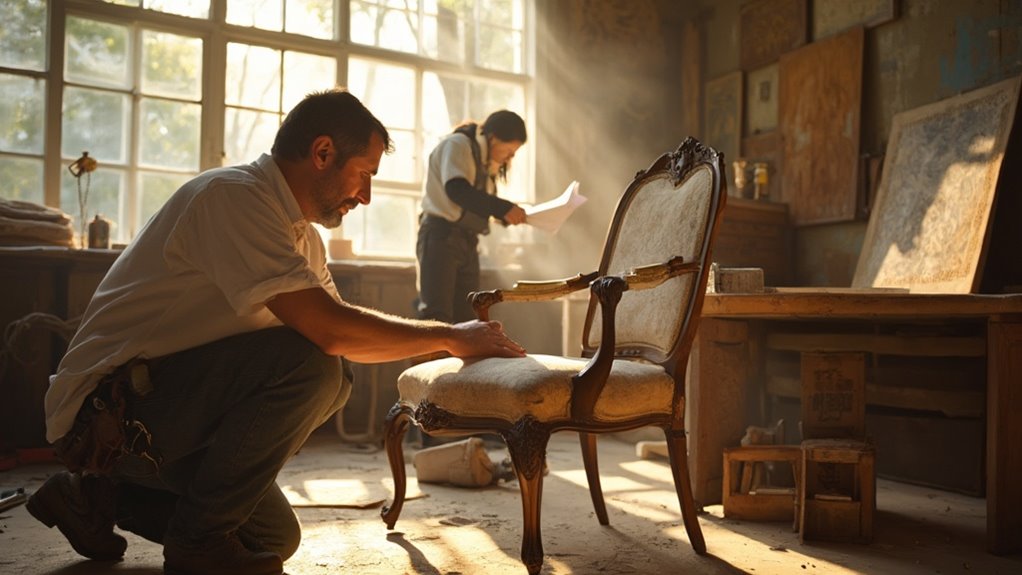
When you collaborate with contractors, you're not just enhancing the restoration process; you're also leveraging specialized knowledge that can lead to faster and more effective outcomes. These partnerships create a unique synergy between restoration companies and construction professionals, combining disaster recovery expertise with invaluable construction insights. This collaborative design approach allows you to identify cost-saving opportunities and utilize durable materials that stand the test of time.
Engaging with contractors means gaining access to their deep understanding of building systems, from HVAC to plumbing. Their technical expertise guarantees that your project incorporates the latest construction practices and standards, enhancing overall quality. By cultivating strong contractor relations, you benefit from strategic planning and data-backed decision-making that streamline the restoration process.
Effective communication is essential in these partnerships. Clear discussions about project scope, timelines, and potential challenges help align all stakeholders. Regular updates and standardized documentation make sure everyone is on the same page, minimizing misunderstandings. Ultimately, by collaborating with contractors, you're not just restoring a property; you're optimizing the entire process for safety, efficiency, and superior results.
Continuous Improvement Practices
In the rapidly changing environment of restoration, continuously improving your practices is essential for achieving superior outcomes and guaranteeing safety. Embracing a culture of process improvement not only boosts efficiency but likewise reduces errors. By establishing standardized processes and protocols, you can create clear guidelines that your team can consistently follow.
| Key Areas | Implementation Strategies | Benefits |
|---|---|---|
| Training | Regular workshops and updates | Guarantees knowledge of best practices |
| Technology | Project management software | Eases seamless coordination |
| Quality Control | Regular audits and inspections | Maintains high safety standards |
Utilizing feedback loops allows you to identify areas for improvement and promptly address any issues that arise. Regular training and skill development guarantee your team stays current with new technologies and safety protocols, while digital documentation systems provide easy access to essential project information. By leveraging innovative tools like AI and drones, you can streamline assessment processes and improve project outcomes. This commitment to continuous improvement drives quality, cultivates expertise, and promotes a safe working environment, ultimately leading to client satisfaction and business growth.
Documentation and Inspections

Building on a foundation of continuous improvement practices, effective documentation and thorough inspections are vital for securing project success and safety in restoration work. You need to implement documentation best practices that capture every detail, starting with wide shots of the room and moving in closer to document the specific source of loss. Utilize standardized note templates for consistency, and confirm good lighting so your records are clear and usable.
Regular inspections of your documentation are critical. Conduct reviews to verify completeness and accuracy, seeking feedback from your team to identify areas for improvement. This process not only guarantees that all important information is included but additionally helps tweak your documentation approach for ideal outcomes.
Incorporate inspection techniques that allow for an extensive audit of both visuals and written records. Use checklists to maintain a thorough and consistent approach, which will help avoid delays or disputes regarding estimates. By focusing on meticulous documentation and rigorous inspections, you'll not only improve the quality of your work but also raise the safety and satisfaction of all stakeholders involved.
Technology Integration in Restoration
Technology integration in restoration is transforming how you approach damage assessment and recovery. With technology advancements, you're equipped with tools that improve restoration efficiency and precision. For instance, thermal imaging cameras reveal hidden moisture behind walls, guaranteeing you make knowledgeable choices during assessments. High-efficiency air movers and advanced drying equipment expedite the drying process, dramatically reducing restoration timelines.
Furthermore, project management software streamlines scheduling and tracking, allowing you to oversee multiple projects seamlessly. By utilizing cloud-based management systems, real-time communication with your team and clients becomes effortless, ensuring everyone stays updated on progress.
Drones and aerial technologies boost your ability to inspect hard-to-reach areas, providing detailed imaging for accurate damage assessment. This not only promotes effective planning but also minimizes safety risks by avoiding hazardous inspections.
Virtual reality (VR) offers a safe training environment, while predictive analytics helps you anticipate potential issues based on historical data. With real-time data analysis powered by AI, you can optimize resource allocation and streamline decision-making. In this technology-driven environment, mastering these tools guarantees you deliver top-tier restoration services efficiently and safely.
Client Feedback and Engagement
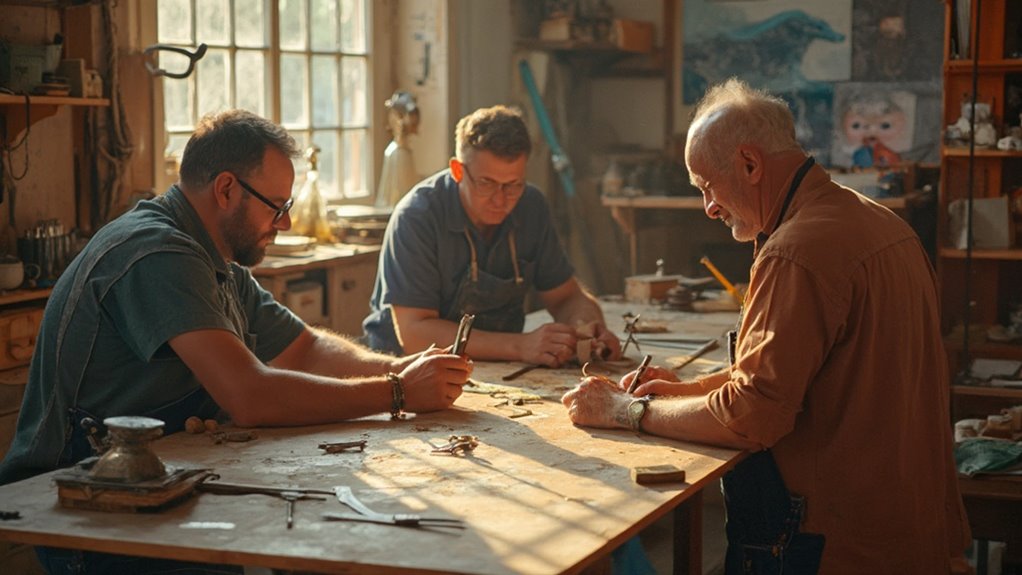
Harnessing client feedback is vital for improving your restoration services and guaranteeing customer satisfaction. By implementing effective feedback loops and engagement strategies, you can gain valuable customer insights that drive continuous improvement. Real-time surveys and multi-channel feedback collection allow you to capture immediate reactions, securing data relevance.
Here's a structured approach to client feedback:
| Feedback Type | Engagement Method | Action Taken |
|---|---|---|
| Service Issues | Live chat and in-app surveys | Quick resolution through support team |
| Product Quality | Follow-up questions | Improve product features based on insights |
| Customer Service Issues | Timely real-time surveys | Prioritize critical service recovery efforts |
| Overall Experience | Sentiment analysis | Personalize experiences based on feedback |
Utilizing advanced analytics and sentiment analysis, you can prioritize feedback effectively, addressing the most pressing concerns first. This proactive approach guarantees swift service recovery and cultivates personalized experiences that resonate with clients. By sharing feedback internally, your teams can align their efforts, improving the overall user experience and solidifying your reputation in the restoration industry.
Conclusion
In the intricate tapestry of restoration, your commitment to quality and safety shines through every meticulous step. By embracing standardized processes and promoting collaboration, you guarantee that each project not only meets but exceeds expectations. Your dedication to continuous improvement and client engagement reflects a profound respect for your craft. As you seamlessly integrate technology and uphold rigorous safety guidelines, you're not just restoring spaces; you're revitalizing trust and confidence in the restoration industry.



